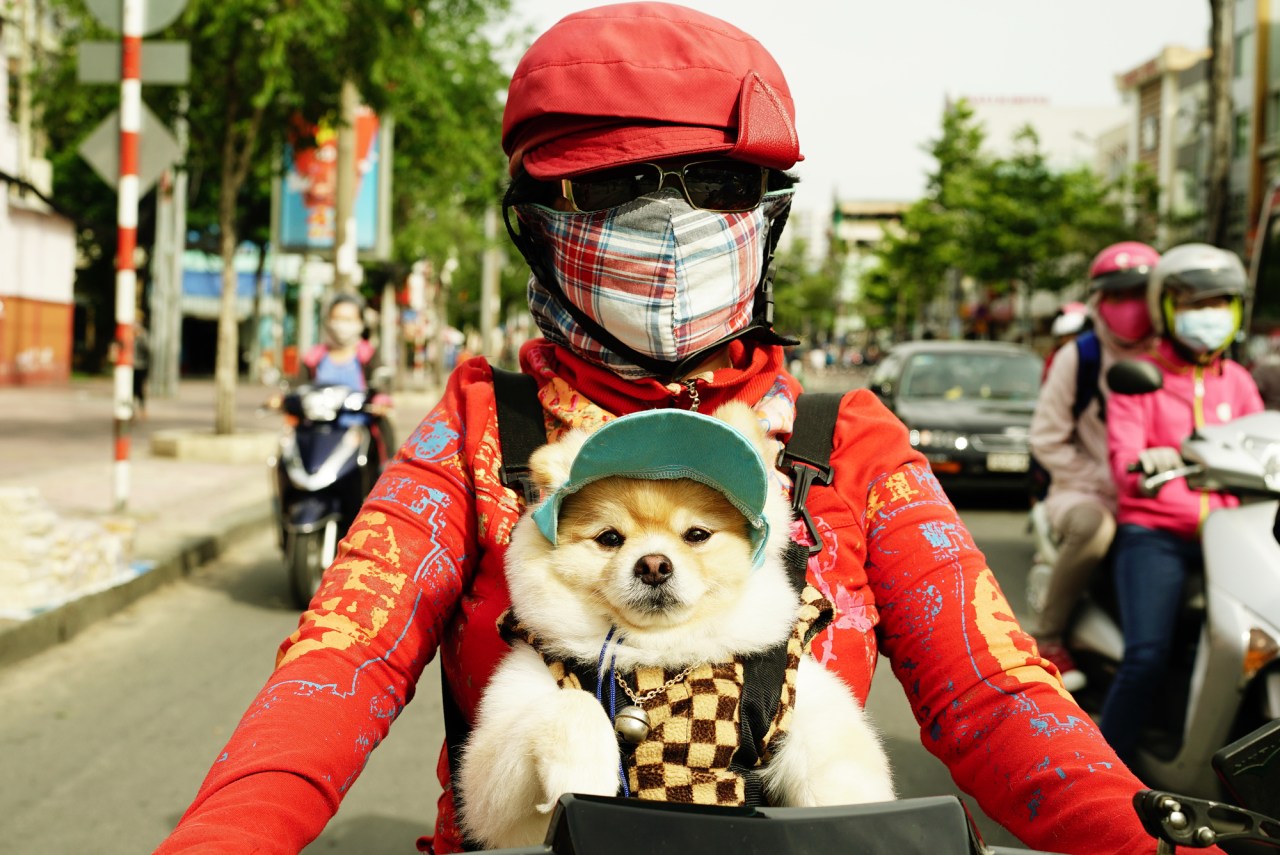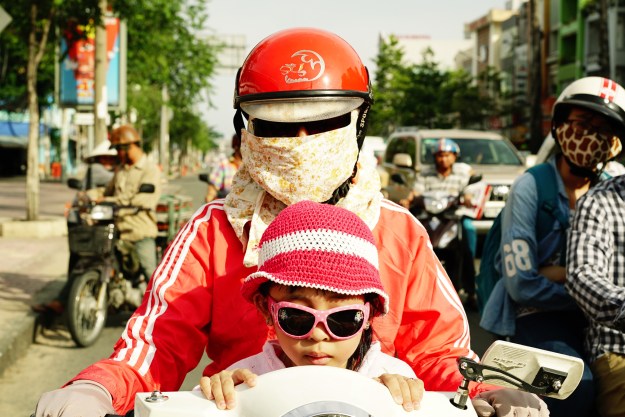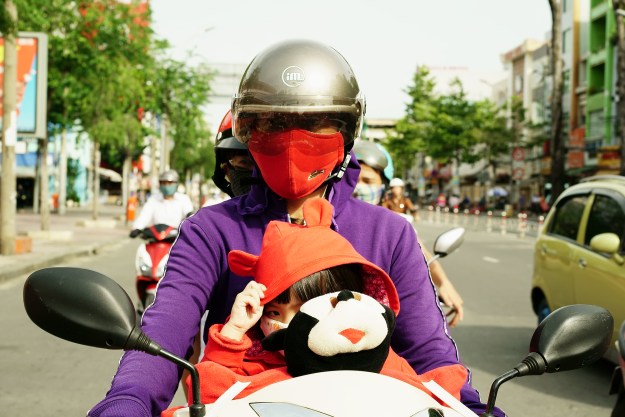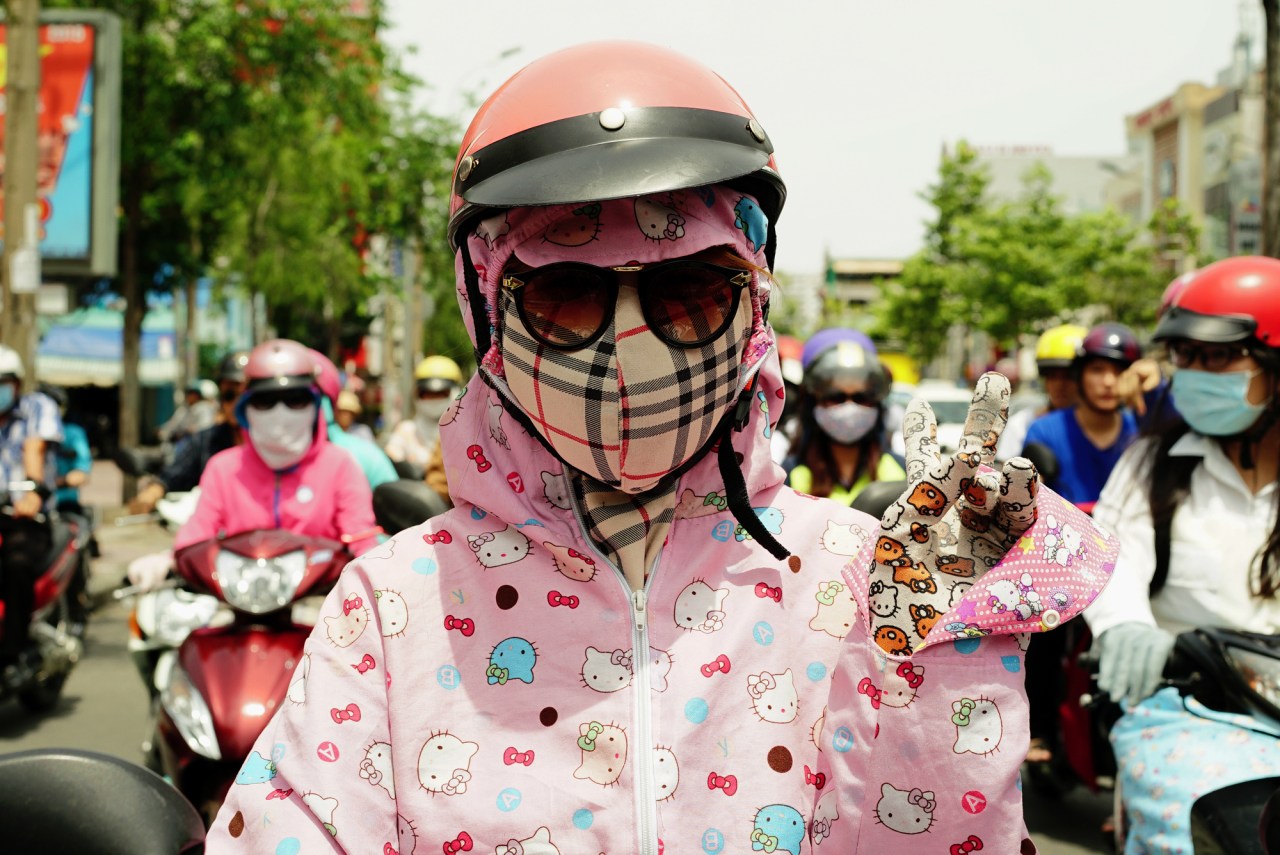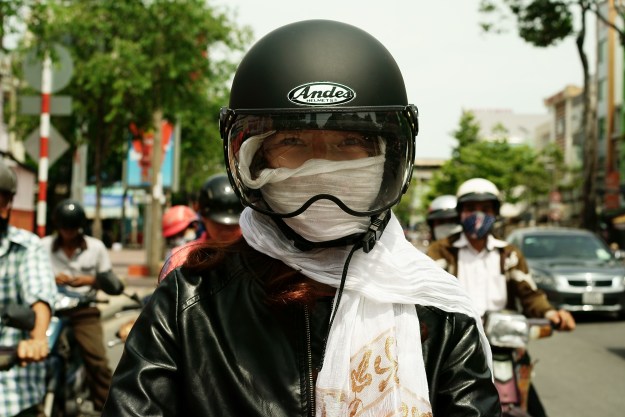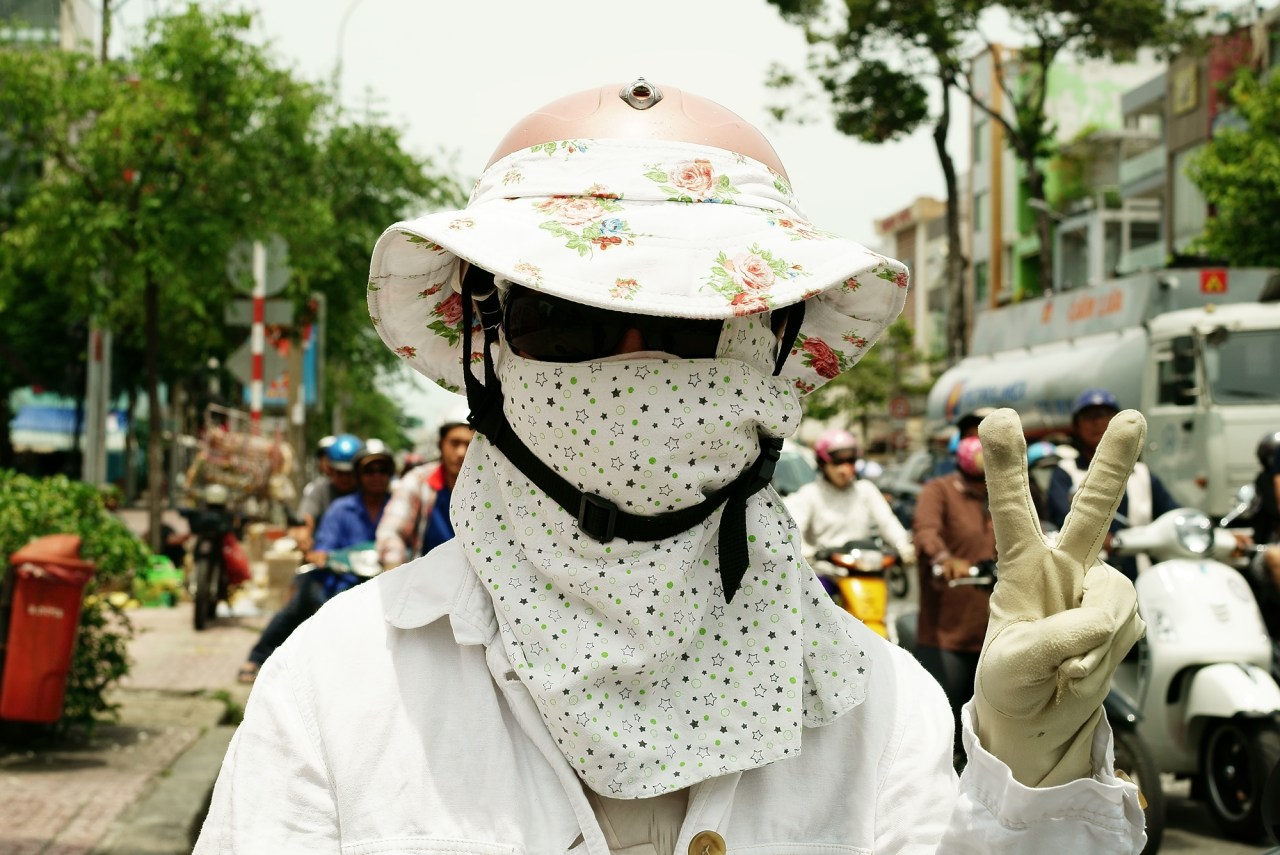Vietnamese women strive to keep their skin light, and even in the humid, tropical heat of the summer, they layer up to avoid the sun. Many, especially young girls, cover their entire bodies with all sorts of materials and pieces of clothing: masks, scarves, fashion sunglasses, long gloves, tight trousers, socks with flip flops, and even hats under their helmets. They wear these things as they drive their scooters around in the heat of the day and the pollution of the crowded, hectic, and noisy streets. These outfits are complicated, unique, and a visual manifestation of an age-old obsession with white skin.
This is a project about the ‘cover-up’ style worn by the female scooter drivers in Ho Chi Minh City. I had a lot of fun photographing these colorful scooter drivers, trying to imagine who was behind the layers. Much of the time, they were answering with a gloved-hand peace sign and I could feel, if not see, their smile. I was fascinated by the modern individuality of each driver’s outfit.
Here, as in most of Southeast Asia, the culture of whiteness is very prevalent. It’s more about class than race—dark skin is associated with low-wage, menial jobs, such as working in the fields. Light skin denotes a big difference of social status and class, perhaps borne of the historical fascination with Otherness and the West. Television actors, movie stars, and models have traditionally been fair-skinned; the cult of paleness has only grown with the proliferation of digital media. White skin, these days, is an aspirational ambition, one that large companies are touting to eager markets.
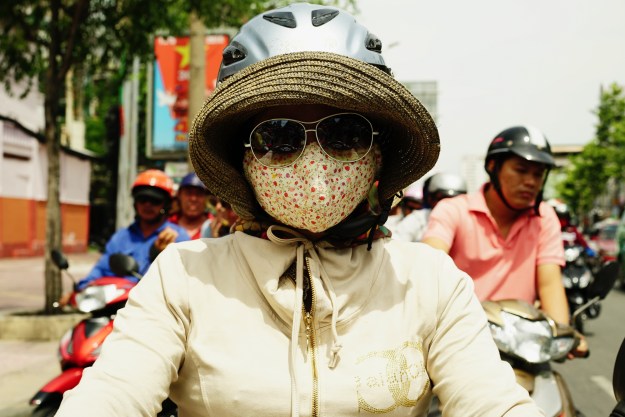

Today, advertisements for white skin as a social ideal have a powerful influence, and a shocking number of skin lighteners are produced. Lately, a Japanese and Korean ideal of whiteness is also being promoted. It’s not just creams for the face, neck, arms, or legs that have whitening agents but lotions, soaps, and deodorants. The choices for those seeking a prized, pale skin tone are myriad. Beyond topical applications, there are whitening pills, injections, lasers, and dietary supplements that claim to make a woman’s skin white, bright and glowing. There was a quiet uproar a few years ago when a whitening wash for genitals hit the Thai and Indian markets.
The cultural phenomenon of whiteness has spawned an interesting fashion trend amongst the scooter-riding females of Ho Chi Minh City. Bicycles of days past have been replaced with storms of noisy scooters—driven by women and girls that dress colorfully and with complicated swagger, even in the tropical heat of summer. This cover-up style, a mix of Japanese Hello Kitty accessories, hipster Western jeans, and logo-laden sweatshirts is something unique to this time and place.
